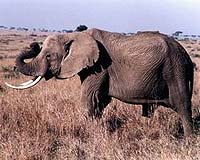 |
for Astrobiology Magazine Moffett Field CA (SPX) Jul 06, 2010 I arrived at Pavilion Lake late yesterday afternoon. The first thing I need to say is that it's incredibly beautiful here. And it's actually quite peaceful despite the presence of a bustling swarm of some 50 scientists, engineers, astronauts and graduate students, submarines, scuba equipment, laptops, still and video camera equipment, hard drives, power cords, power generators, and a temporary wireless Internet that makes this normally isolated location as connected as a cafe in Manhattan. Yesterday at dusk I watched a mother duck nonchalantly herd her brood of ducklings past the lakeside home that serves as PLRP's main gathering place. One of PLRP's main activities is the exploration of the lake with a pair of DeepWorker one-person submarines. This is the third year the Deepworkers have been at the lake. On a typical day, two DeepWorker "flights" take place, both subs going out each time. Pavilion Lake's microbialites - carbonate structures that are thought to be created by microbes - come in many sizes and shapes. Last year, the main goal of the DeepWorker flights was to map the entire lakebed, to develop an overview of how different types of microbialites are distributed throughout the lake. This year the missions will focus on specific areas in more detail. The lake has three basins: north, central and south. This morning I went out with a mission that scanned the shorelines of the north basin. Most of the work in the past has focused on the south and central basins, which have more microbialites. Today's missions were designed to fill in some gaps that remain from last year's comprehensive mapping. First I hung out on the large metal-framed structure known as the "barge." This is where the subs are stowed when not in use. When it comes time to deploy them, a small motorboat lashed behind the barge pushes it into place on the lake. I watched the pilots for the morning flight, Allyson Brady, the acting PLRP principal investigator, and Bernard Laval, one of the longtime leaders of the research at the lake, go through their pre-flight checklist and then be lowered into the water and disappear beneath the surface. Then I transferred to one of the "nav boats," also known as "chaser boats." There are two of these; each one motors around on the surface following one of the subs as it flies around below. The nav boats don't just follow the subs, though: they're actually responsible for telling the subs where to go. I was on the nav boat following Bernard. The pilots follow flight plans developed in advance. To a large extent, they're free to explore the target area as they see fit, but they're also required to hit preset waypoints, and it's the job of the team on the nav boat to make sure they don't go off-course. I thought, with all the technology around, why can't the sub figure out where it is without help from the surface? Not so easy, apparently. GPS signals don't travel well through water. So on each nav boat is a computer running customized software that combines data from GPS and from the sub to calculate and display the sub's location. The software, called WinFrog, commercial navigation software used by Nuytco, the company that built and deploys the DeepWorkers. It's the navigator's job to constantly to monitor the WinFrog display of the sub's position. If the navigator sees the pilot go off-course, he tells the CapCom, a second person onboard the nav boat, who communicates to the sub pilot over an acoustic link that can travel through the water. It's like a complicated game of telephone. In addition, if the pilot comes across anything interesting during a dive, he or she communicates that to a third person onboard the nav boat, the science stenographer, who's running a souped-up version of Google Earth. Whenever the pilot describes something to the CapCom, the science stenographer clicks on a map of the lake, and writes down what the pilot says so the information can be reviewed at another time.
Share This Article With Planet Earth
Related Links - Darwin Today At TerraDaily.com
 Malians mobilise to protect dwindling elephant population
Malians mobilise to protect dwindling elephant populationBanzena, Mali (AFP) July 5, 2010 Ali Ag Rhissa, a young Touareg nomad, sits in his tent, his gun ready, on the frontline of one of Mali's battles - protecting its majestic but dwindling herds of desert elephants. Faced with the dual threat of drought and poachers, the elephant population has almost halved in recent decades. But help is at hand from local people in northern Mali, who have started to form conservation br ... read more |
|
| The content herein, unless otherwise known to be public domain, are Copyright 1995-2010 - SpaceDaily. AFP and UPI Wire Stories are copyright Agence France-Presse and United Press International. ESA Portal Reports are copyright European Space Agency. All NASA sourced material is public domain. Additional copyrights may apply in whole or part to other bona fide parties. Advertising does not imply endorsement,agreement or approval of any opinions, statements or information provided by SpaceDaily on any Web page published or hosted by SpaceDaily. Privacy Statement |